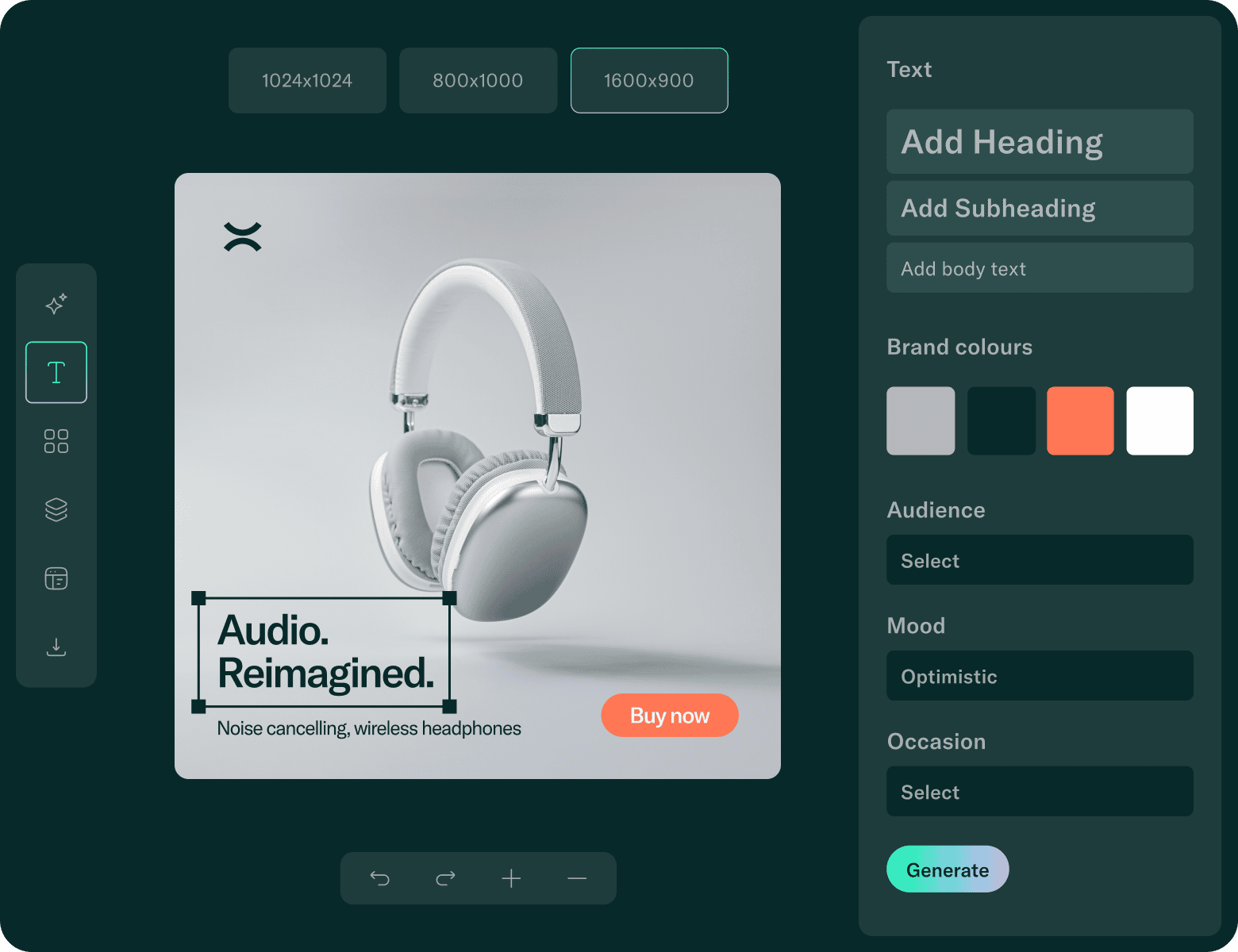Every year, the internet floods with recycled Black Friday advice: "start early, test your creative, don’t forget email.”
That advice isn't bad, but it’s painfully obvious, and rarely useful.
The marketers who actually run winning Black Friday and Cyber Monday campaigns know that having a good plan doesn't mean you'll succeed at executing it. No matter how good the plan is, it's bound to get thrown out the window amidst the chaos of the sales holiday.
So the real question is: how do you prepare for a successful BFCM when you know your plan will likely become moot by the Wednesday before Thanksgiving?
So I spoke with marketers who manage huge BFCM campaigns every year. They have deep experience running paid campaigns at B2C brands or renowned media agencies.
Most importantly, they've seen what it means to pivot, adjust the plans in real-time and still come out of the holidays with real growth to show for all their efforts.
So here it is. A distillation of what actually works, straight from experts.
1. Build Momentum Early, Before CPMs Spike
The best BFCM campaigns are won weeks before they begin.
Allie Newman is a Senior Account Manager at Realtime, managing paid performance for retail brands like Reef.
She shared how she helps her clients avoid high CPMs by beefing up their retargeting lists ahead of the holidays.
“We’re advising brands to heavy up on prospecting investment to build strong retargeting pools before BFCM CPMs spike. This early momentum will pay dividends once conversion costs rise closer to peak sale days.”
Retargeting an audience you’ve already won is cheaper than clawing through the competition to reach new buyers.
Luke Heinecke (CEO at Linear) agreed, pointing out that Meta’s algorithm performs best when it’s fed early. “Load your ad sets, audiences, and creative well before the rush,” he said. “You want stability when the real money starts moving.”
Both emphasize clean data as the backbone. QA product feeds, pixel health, and UTMs to ensure you’re capturing insights when every click costs more. As Allie put it, “BFCM is one of the richest data moments of the year—you can’t afford to miss it.”
2. Plan for the Unplanned
You can’t control what your competitors do during BFCM, and you can’t plan your inventory levels perfectly. But you can control how prepared you are to respond to the unexpected.
Danny Silverman (Ecommerce Growth Strategist at Silverstream Consulting, with over two decades of leadership across Fortune 500 brands) shared this quote I thought was apt:
Any plan will not survive its first encounter with reality. The reality will always be different. It will never be the plan.
Or as Danny put it, “the difference between chaos and control is how well you plan for the inevitable unplanned.”
He’s seen the best-performing brands approach Q4 like a live event, where planning starts in August, with every stakeholder at the table—sales, supply chain, brand, and media—using shared dashboards and meeting every few hours during peak days.
Danny shared what that actually looks like: “Those cross-functional touchpoints are not just check-ins but decision forums. Every meeting ends with actions assigned, and every next meeting starts with accountability checks.”
The takeaway: a culture of accountability and clear communications beats planning. Which means even though Danny recommends starting in August, it’s not too late.
You can bring all your most important stakeholders together now.
And you can add AI to that panel of strategic advisors in a few minutes.
Our customers use Prism, our performance marketing OS, to plan for different scenarios ahead of time, run real-time competitive analyses on autopilot every day, and pressure test the media plan on the fly.
3. Let Your Best Sellers Lead the Way
If the unforeseen is your enemy, predictability is your friend. Steph Salardino (Ecommerce consultant with 20+ years in the retail industry) advises brands to “highlight core best sellers and replenishment items” across every channel. They’re the proven winners, and when acquisition costs surge, familiarity converts, protecting your margins.
She also recommends merchandising ads and landing pages together—if a best seller is featured in your Meta or Shopping creative, it should appear first on the landing page. For loyal customers, shift the emphasis to newness: limited editions, early access, or gift bundles.
Alex Dos Santos (Director of Customer Success here at Pixis) echoed that logic, adding, “Keep your offer clear and direct. The simplest message cuts through the noise.”
Black Friday or Cyber Monday can be risky times to launch new products, test new creative, or try to move more of your less-popular items.
Balancing reliability with excitement creates a funnel that captures both first-time buyers and loyal fans.
4. Don’t Panic About Rising CPMs. Instead, Panic About Weak Creative
Every BFCM brings complaints about expensive media.
We observed in our own 2025 performance marketing benchmark report, that Google CPMs rose about 15% during Black Friday 2024, and Meta’s shot up by more than 30%.
Alex Dos Santos thinks that’s a distraction. “Ad costs go up for everyone,” he said. “What matters is whether your performance still backs out.”
Creative quality, not auction price, separates winners from losers. Chris Parrett, CEO at Social Hustle, said, “Think about how good your feeds are at showing you content you love. The ad systems are even better at that. Give them content worthy of your own feed.”
The most successful brands embrace simplicity. Clean visuals, clear offers, strong framing. As Alex put it, “People are in buy-now mode. Don’t overcomplicate it.”
Allie Newman shared that creative depth (i.e. having enough, varied creative) is also “critical to sustain momentum and avoid performance fatigue as competition rises.”
(By the way, if you need help building creative depth, Pixis can help. Our generative AI creative platform, Adroom, allows you to create endless iterations on product imagery, copy, background, colors, CTAs and more.)

5. Give Meta More Flexibility with Lifetime Budgets
When BFCM hits, Meta’s algorithm needs room to breathe. Luke Heinecke recommends switching from daily budgets to lifetime budgets to give the system flexibility to allocate spend dynamically. “It’s such a simple change, but it makes a massive difference,” he said.
He pairs this with early creative uploads—“build your arsenal now”—so campaigns can ramp seamlessly as performance data accumulates. Allie Newman adds that algorithm stability depends on consistency: don’t reset campaigns mid-flight if you can avoid it.
Together, these operational tweaks make scaling smoother and avoid the volatility that derails so many BFCM campaigns.
6. Treat October as the New November
Consumer behavior has shifted forward. “Meta is seeing a 50% lift in October purchase intent for discounts over last year,” said Chris Parrett. “If you’re not running holiday promos in October, you’re missing a huge market segment.”
Luke Heinecke confirmed that early awareness campaigns—especially video—build anticipation and warm audiences weeks before conversion spikes. “We launch top-of-funnel video ads early just to announce when deals will drop,” he said. By the time offers go live, those audiences are primed and ready.
7. Execute Relentlessly Once the Sale Begins
When the week arrives, the best teams stop experimenting. As Allie Newman said, “The brands still testing during the sale are already behind.”
November is about stability and precision. You can’t avoid every surprise, but some are well within your control. You should have campaigns that can scale without breaking, workflows that keep budgets aligned with inventory, and enough creative depth to outlast fatigue.
Danny Silverman described his clients meeting every few hours during BFCM, shifting spend in real time to what’s working. “Great teams don’t freeze when the plan breaks,” he said. “They move.”
That’s the final lesson from every expert I spoke with: while ad creative is a huge contributing factor for BFCM success, creativity in how you respond to the unexpected is sometimes overlooked.
8. Zig when your competition zags
We’ve heard from contacts at Meta that compared with last year’s BFCM, they expect a 50% lift in purchase intent on discount offers.
And the results from the most recent Prime Day suggest something similar:
- July’s Prime Day event showed up to 20% deeper discounts in several categories than retailers offered in 2024.
- October’s Prime Day event showed how price-sensitive consumers are this year.
But just because everybody else is offering deep discounts doesn’t actually mean it’s the right move for your brand.
Matt Mazer, VP of Client Services at Realtime, says his client, a premium consumer electronics brand, is changing their discounting strategy this year.
“We're carefully evaluating our presence and activations around promotions as our client does not want to condition their consumers to only purchase during promotional periods.”
The bet Matt’s making is that he can capture higher LTV, repeat purchasers, even at the potential cost of reducing conversion urgency for specific products.
So while this premium brand is still offering discounts, but they’re “shifting from the historical strategy where each product has had individual creative for performance and consideration funnel segments to broader offers such as "save up to 20% on select products for BFCM" or "save 25% on soundbars this holiday season" all of which will be supported by a holiday hero film.”
The Difference Between Chaos and Control
Black Friday and Cyber Monday will always bring volatility. Prices spike, competitors do strange things, inventory sells out, and plans break. But as every expert here made clear, the difference between chaos and control is preparation. Not just planning. We at Pixis; want to help with just that. Understanding these pain points; we've come up with Prism. As to how it can help you in your efforts ; why don't you see for yourself?

